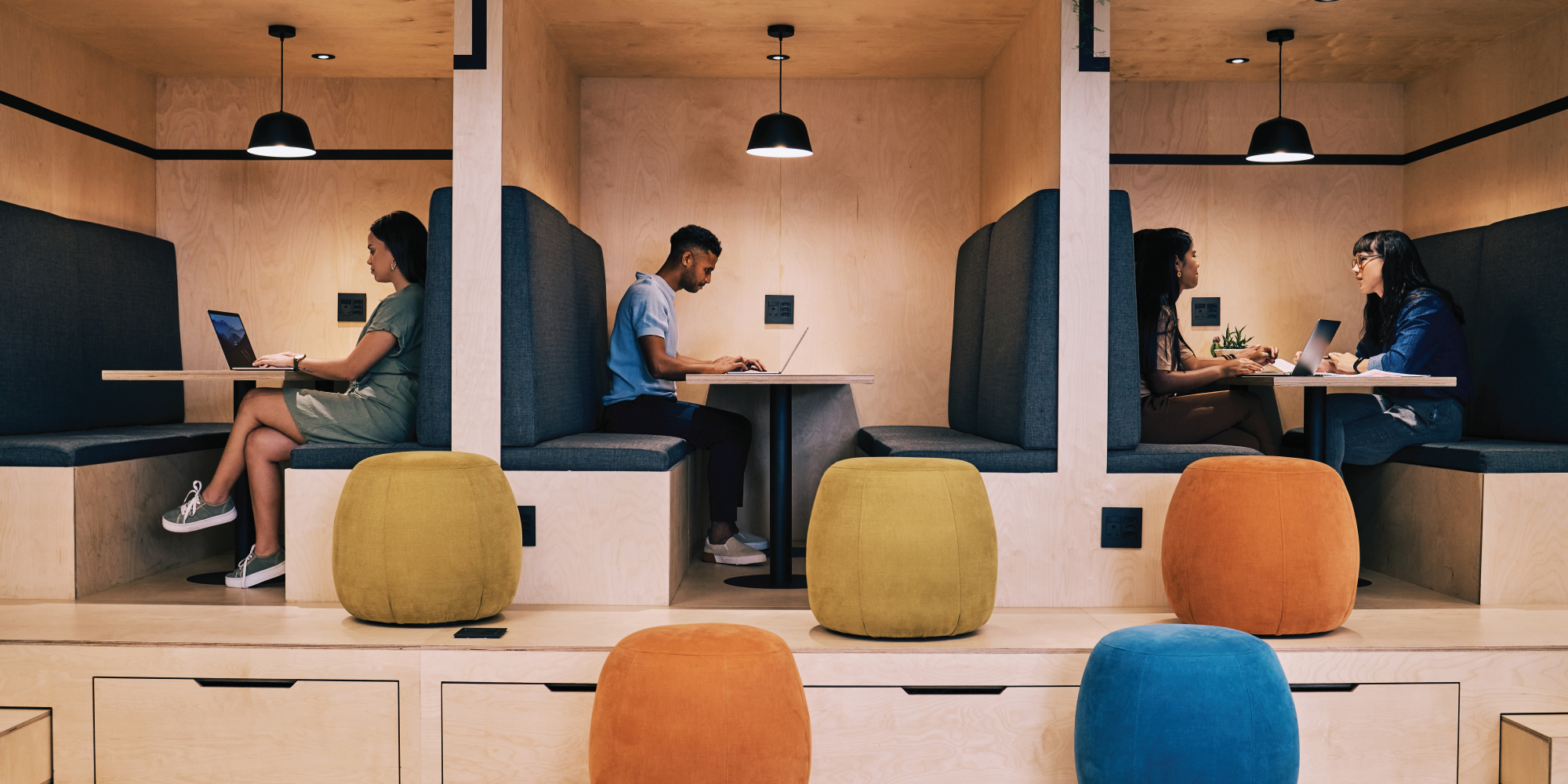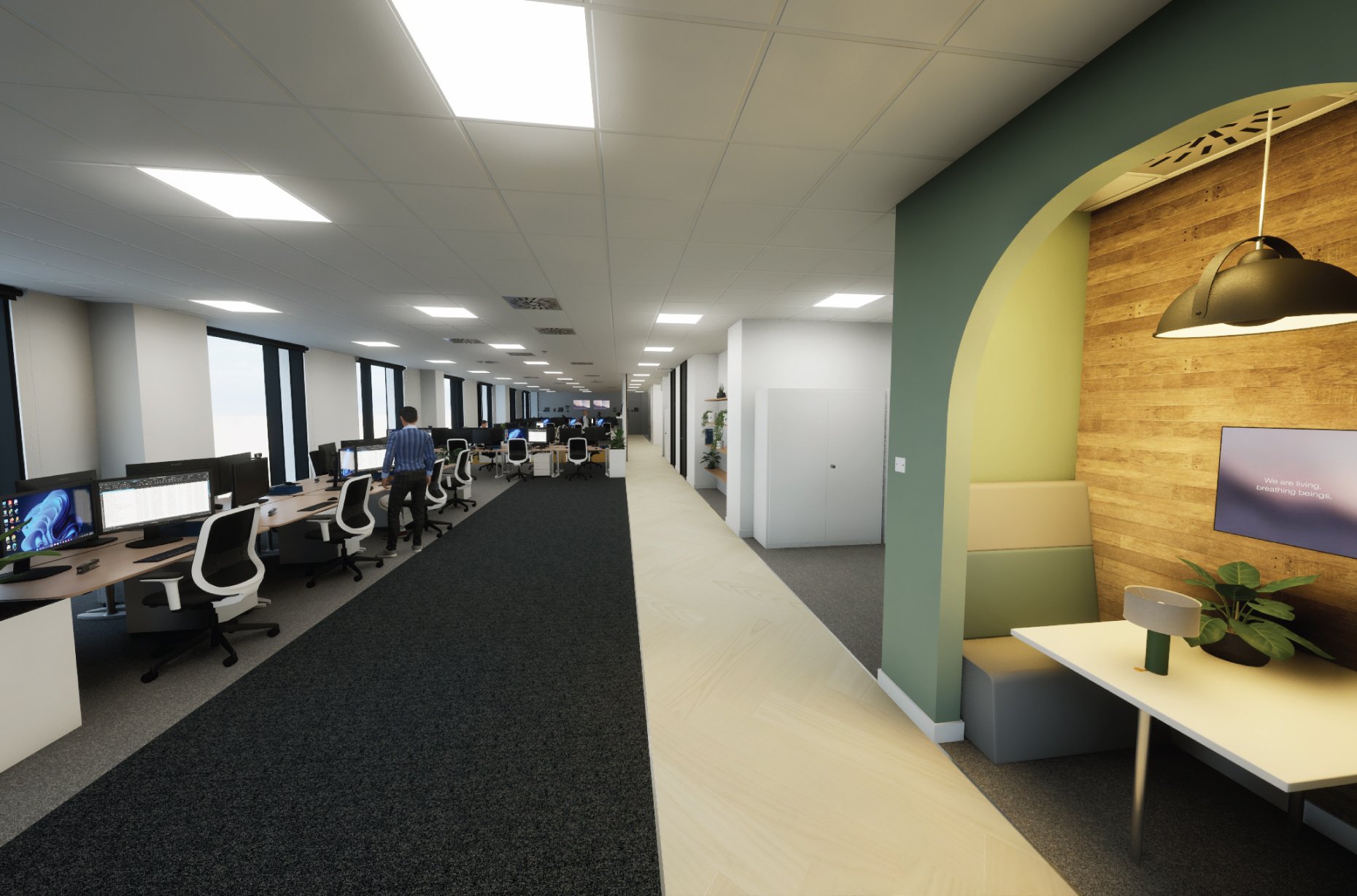Principles for Human Conscious Design
Increasingly, communities, organisations and businesses are recognising that to truly thrive, everyone in society needs to be able to flourish. Design has a pivotal role to play here; to create spaces that foster inclusivity.
Inclusive design sits at the heart of what we do. We call it Tarkett Human-Conscious Design® and it is our commitment to create flooring that is good for people and the planet.
Learn how to unleash your creativity and achieve inspired solutions by designing with specific needs in mind.
“There’s lots of talk about diversity these days. We tend to think about that in terms of things like racial diversity, gender diversity and ethnic diversity. But it's also important to have diversity in how people think.”
What is neurodiversity?
No two people are the same, so it is not surprising that there are different ways in which we look at the world. Neurodiversity is about the diversity in our way of thinking. These ways of thinking have nothing to do with religion or political beliefs, for example, they are biologically determined.
Neurodiversity can be roughly divided into two categories, namely neurotypical and neurodivergent. Neurotypical is what we often consider the norm, this is the most common. Neurodivergent means that one looks at the world differently than many others. Examples of neurodivergent neurotypes are ADHD, autism, dyslexia and dyspraxia. Additionally, neurodiversity can be inclusive of neurodegenerative conditions like dementia.
It is estimated that one in seven people is neurodivergent – many of whom have no formal diagnosis.

“Too often the neurodivergent is noted as under-performing. Feedback is often focused on what the individual needs to do to improve, instead of looking at environmental factors which could be limiting their ability to be successful.”
What makes an inclusive design?
Inclusive design celebrates the vast diversity of human experiences by putting people at the heart of the process from the start. But it’s not about designing to the lowest common denominator, not at the expense of creativity.
Creating spaces where everyone can thrive, means exploring the collective and individual requirements of those using a space at the outset. Consider differences in sensory processing, executive functioning and emotional regulation.
1. Sensory processing
How we perceive sounds, smells and textures in our daily lives.
Many neurodiverse people are over- or under-sensitive to the sounds, smells, visual impressions, and textures around them. This is referred to as being ‘hyper’ or ‘hypo’ sensitive, respectively, and can significantly affect day-to-day life.
Whether it’s a preference for a calm environment or one with contrasting colours and space to move, catering to individual needs can lead to more innovative and effective solutions.
2. Executive functioning
How well we are able to get things done.
Trouble with executive function is common in people who learn and think differently as memory and attention are key components in staying on track. While short-term memory loss is most commonly associated with dementia, poor recall affects many people with ADHD, too.
Making everyday environments less challenging for individuals who may struggle with focusing or interpreting verbal and nonverbal cues by making small adjustments like providing clear signage or curating familiarity can make a big impact on their quality of life.
3. Emotional regulation
How we manage our feelings.
It is common for people with neuro differences to experience emotions more or less intensely, and for some, emotions may last longer and be triggered more easily.
By designing inclusive spaces with emotional needs in mind, we can prevent the negative consequences of emotional dysregulation and keep emotions from interfering with daily life.
“I am most sensitive to touch. I couldn’t wear jeans or woollen jumpers until I was a teenager. It's actually the most common hypersensitivity I’ve found among autistic people; many of them don’t like being touched.”
A design for everyone
Designing a space that caters to the needs of both neurotypical and neurodiverse individuals can be challenging, but it is achievable. By striking the right balance and making the right choices, you can create an environment where everyone can perform at their best. It is important to consider the following factors:

Space planning
Crowded places such as offices, classrooms, auditoriums, and community halls require design strategies that balance the hypersensitivities and hyposensitivities of neurodiverse thinkers. Creating dedicated zones for different needs allows people to self-regulate.

Material choice
The choice of materials used in a design is crucial for creating the right ambience and level of stimulation in busy, communal spaces and quieter, dedicated areas. Flooring impacts various aspects of a space's functionality, including style, comfort, acoustics, and wayfinding.

Designing for care
Space planning for elderly care and people with Alzheimer’s and dementia requires specific spatial and material considerations. Surfaces and finishes play a key role in creating safe, therapeutic environments that enhance the well-being of everyone.
Explore the World of Virtual Reality for Human-Conscious Design
Designing education, workplace, health, and elderly care spaces is an involved process that requires a deep understanding of how all users perceive their environment. To help our clients understand the significant impact of design choices on both neurotypical and neurodivergent individuals, we have developed the Human Conscious Design Platform.
This revolutionary virtual reality (VR) tool provides a first-hand experience of how either hypersensitivity or hyposensitivity to colours, contrast, material textures and finishes, and light can impact a person’s well-being, leading to a more inclusive design outcome.
The Human Conscious Design Platform is an immersive virtual reality tool that allows you to experience how education, workplace, and healthcare spaces can foster inclusivity.
.png?width=2000&height=1333&name=HCDP_Photo-Healthcare%20(002).png)

Human Conscious Design Principles CPD
Explore inclusive, human-conscious design principles by celebrating the vast diversity of human experiences, putting people at the heart of the design, and creating spaces where everyone can thrive by considering space planning, material choice, and designing for care.
More information?
Want to learn more about Tarkett Human-Conscious Design® and how you can practice inclusive design in your next project? Download our free guide that explores key considerations for designing environments that support individuals who see and interact with the world differently or contact us for more information.
Customer Service
Contact us
Call us on:
+44 (0) 800 328 2115
Tarkett sites
You're on the professional website
